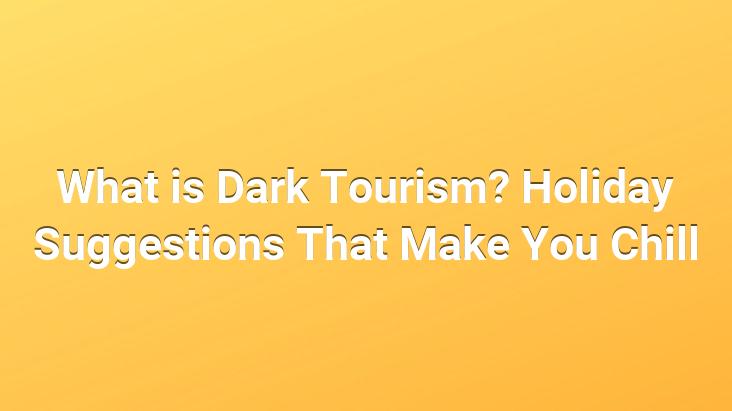Although vacation is an enjoyable activity, sometimes the pain of human history can be the reason for your trip.. Especially recently, this type of travel has started to become popular. Visits to places where disasters and deaths have occurred or which are scary with their appearance are referred to as Dark Tourism in the tourism literature.. This travel experience, which has attracted a lot of attention especially by young people in recent years; It covers places such as concentration camps, dungeons, cemeteries, disaster zones, spooky castles, locations of horror movies and war zones.
There are many countries and cities where you can have this interesting experience.. However, the most popular of them were compiled by Prontotour guides.. I think that this work shared with me will be of interest to you as much as I am.. In fact, I added a little bit of my own dark tourism experiences to the list.
Here are the Destinations That Come to Mind When You Say Dark Tourism…
HIROSHIMA ATOM BOMB DOME, JAPAN
The atomic bomb dropped on Hiroshima, Japan by the United States on August 6, 1945, cost the lives of 70,000 people at first. Indirectly, it is said that the effects of the nuclear attack, which cost the lives of more than 100 thousand people, still continue today.. The Atomic Bomb Dome (A-Bomb Dome), an exhibition center belonging to the governor’s office, located 150 meters from the main center where the bomb was dropped, is preserved in a destroyed way today.. The building was taken under protection by UNESCO in 1996.. The area around the building, which was visited by thousands of people as the commemoration center of the attack, has been arranged as Hiroshima Peace Memorial Park.. Within the park area, there are Children’s Peace Memorial, Atomic Bomb Monument Hill, Peace Torch, Peace Memorial Museum and many mausoleums.
GROUND ZERO, NEW YORK
On September 11, 2001 in New York, Al Qaeda’s Twin Nearly 3,000 people lost their lives in the terrorist attack on the Towers.. Two giant pools were built in honor of those who lost their lives today at the location of the Twin Towers, which were destroyed by the crash of the planes.. The names of the people who lost their lives are on the wall surrounding the memorial pool.. The 9/11 Museum in this area called Ground Zero can also be visited.
CHERNOBIL NUCLEAR IMPACT AREA, UKRAINE
It is stated that 7 thousand people died directly as a result of the explosion at the nuclear power plant in Chernobyl, Ukraine on April 26, 1986, and 140,000 people died due to the radiation.. The disaster area and the nearby city of Pripyat are currently a ghost town.. Tours of tourism and environmental organizations are organized to raise awareness of the public against nuclear in the region evacuated after the explosion.
AUSCHWITZ COLLECTION CAMP, POLAND
The Auschwitz Concentration Camp, which was established in the second world war, is located in the village of Birkenau, in the city of Poland. It is known that over 1 million Jews were murdered by the Nazis in the concentration and extermination camp, a place of great suffering.. In the concentration camp with the inscription “Work Makes Freedom” on the entrance door, Jews were forced to work 12 hours a day in harsh conditions.. Unable to work, sick and disabled, prisoners and other Jews were shot here, killed in gas chambers or burned in furnaces.. In the barracks inside the concentration camp, you can see the gas chambers, ovens, dormitories, personal items such as glasses and shoes belonging to the murdered Jews, and fabrics made from the hair of the murdered persons.
TUOL SLENG GENOCIDE MUSEUM, CAMBODIA
Tuol Sleng Genocide Museum 1975-1979 It was the center of the genocide carried out by the Khmer Rouge under the leadership of Pol Pot in Cambodia between the years of. The building, which used to be a high school building, was converted into a prison during the genocide years and became the grave of 17 thousand people.. The building, which is used as a museum today, is located in the capital city of Phnom Penh.. Inside the museum, torture rooms, cells, torture mechanisms, hundreds of Cambodian skulls, photographs and signs with prison rules can be seen.







